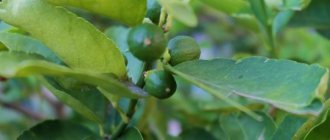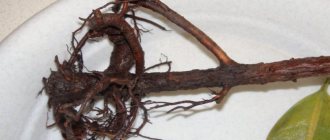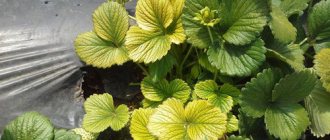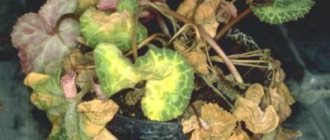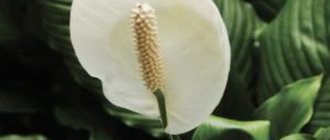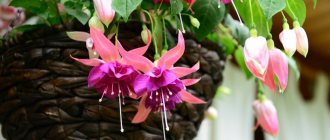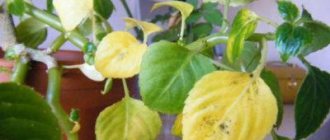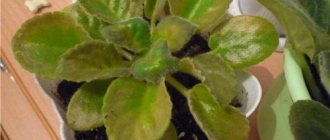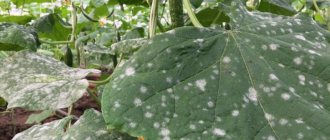General rules for caring for chrysanthemums at home
Compliance with basic growing rules is the first and most important condition for success in floriculture.
Choosing a landing site
In order for bright flowers to please the eye, you need to take the choice of planting location seriously. This flower will not grow in any soil. When planting chrysanthemums in open ground, you need to take care of its preparation in advance. The plant feels good in loam and at higher elevations.
It is not advisable to choose low-lying areas with high humidity for planting.
On a note! Soil with a high clay content can be improved if fertilizers, peat, and humus are added to it in advance.
Chrysanthemums love light, so they need to be planted on elevated, sunlit areas.
Watering
The most important thing here is not to overdo it, since chrysanthemums tolerate excessive moisture very painfully. In principle, a plant can go for a long time without watering at all, but then it will not please with lush flowers. Regular watering is important during the period of growth and ripening of buds, and can be stopped once flowering begins.
For watering, use warm water, being careful not to let it get to the base or on the leaves.
Trimming
In order for the bush to be lush, shoots are pinched, withered flowers, old and diseased leaves are removed. Such events contribute to long flowering.
On a note! Before sheltering for the winter, chrysanthemums are pruned, leaving shoots up to 10 cm high.
What varieties of chrysanthemums are suitable for home cultivation?
For growing chrysanthemums in a room, miniature varieties are suitable, the height of which will not exceed 65 cm. The buds differ from each other. The diameter of small inflorescences will be 2.5 cm, while large flowers will reach 25 cm in diameter. For the home, preference is given to mulberry, Indian or Chinese chrysanthemum, as the most miniature and unpretentious. Varieties are considered the most common and are used in home gardening. Based on signs and beliefs, you should not place pots of chrysanthemum, wax ivy, and tradescantia close to each other.
| Variety name | Characteristics |
| "Globular" | The variety appeared recently and is used for growing on balconies and loggias. During the growth period, the bush takes on the shape of a ball. Does not require additional care. |
| "Multiflora" | The variety is characterized by the presence of small inflorescences. During the growth period it takes on a spherical shape and does not need pruning. The foliage is hidden under many small buds. There are hundreds of varieties of varieties. |
| "Zemblamix" | A beautiful inflorescence framed by a large flower, which will bloom with the arrival of September. The variety is characterized by the presence of one flower, the diameter of which reaches 25 cm. Provided that three buds are formed, the diameter of each will not exceed 10 cm. The stem of the plant is strong, the bouquet lasts for several weeks. |
You can buy seeds in a store or market. Low-growing varieties of chrysanthemums are considered to be a profitable purchase. The flower is not demanding in terms of care, and flowering will last for several weeks.
Chrysanthemum does not bloom, what to do
Many gardeners love chrysanthemums because they decorate the garden until late autumn. But it happens that the chrysanthemum does not bloom and the gardener does not know what to do.
Why does chrysanthemum not bloom in the garden:
- Lack of space. If the bushes are planted too densely, they will not have enough nutrients and moisture to form flowers.
- Wrong location. Bushes planted in shaded areas or low areas will not bloom. In lowlands there is often high soil moisture, which causes the roots to begin to rot.
- Poor soil. If chrysanthemum grows in open ground, you should take care to enrich it with nutrients. This will help the plant to bloom.
Another common reason for the lack of flowers is chrysanthemum diseases.
Growing and caring for indoor chrysanthemum
They prefer sunny places in the house, but do not like direct sunlight. For cultivation, ordinary garden soil is suitable, into which you can add sand or humus. The main thing is not to use acidic soils. For normal growth and abundant flowering, it is necessary to maintain an air temperature of about 10-15 degrees. At elevated air temperatures, flowering will be less abundant and shorter. They require abundant watering, but it is important to avoid waterlogging the soil. When the soil dries out, they will begin to wither and their leaves will fall off. Periodically, the flower needs to be sprayed with water.
Indoor chrysanthemums are replanted every 2 years, with the exception of young plants, which are replanted every year. To enhance branching and crown formation, systematically prune and pinch. After flowering, you need to prune, leaving cuttings approximately 10-15 cm in height. After pruning, the pot with the plant should be taken to a cool, dark place (basement), periodically watering the plant until spring. Then the plant can be planted in open ground, if possible. Some people buy flowers in pots and throw them away after they bloom. In fact, a plant can be given a second and subsequent lives by replanting it.
Chrysanthemum leaves turn yellow: what to do?
Yellow leaves spoil the appearance of the bush and indicate a disease. Therefore, it is necessary to solve this problem as quickly as possible.
Why do the leaves of chrysanthemums in a pot turn yellow? If this happens, it is worth trying drainage. Perhaps the soil is too dense and moisture does not penetrate to the roots. Another reason is that the pot is too small, causing the plant to lack the necessary nutrients.
Yellowing of the leaves is also caused by diseases of garden chrysanthemum such as rust and septoria.
Advice! If the leaves of a chrysanthemum in the garden turn yellow, it is worth inspecting the plant for diseases and assessing the conditions. Perhaps the chrysanthemums should be transplanted to a higher place or the watering regime should be changed.
Non-communicable diseases
Errors in chrysanthemum growing technology can lead to diseases - the condition of the soil, fertilizing and watering regimes affect the development of autumn flowers, violation of the care conditions weakens them, and this is a direct path to infection with various infections.
Flower growers are familiar with the concept of “root suffocation”; the root system literally suffocates from excess moisture and lack of air in the soil, if it is clayey, not well drained and at the same time flooded with rain. A plant that is forced to exist in such conditions turns yellow, its roots rot, and eventually it dies.
The inability to absorb excess moisture leads to a crack appearing on the stem under the bud, and the future chrysanthemum flower breaks off or becomes deformed. On the other hand, a lack of moisture in the soil also depresses chrysanthemum bushes, the foliage becomes lethargic, and disease resistance decreases. Low ambient temperatures cause the leaf to turn yellow or red along the veins.
Unbalanced feeding with organic and mineral fertilizers also weakens the plant. For example, you cannot fertilize flowers with fresh manure. This leads to burns of the roots and weakens them, making them susceptible to infection.
Chrysanthemum diseases and their treatment will not cause any special problems for flower growers if you follow the rules of care and are attentive to your flowers.
This is interesting: Diseases of irises: we tell all the nuances
Why do brown spots appear on leaves?
Light brown spots indicate a disease such as gray rot. The main reason is lack of air, which occurs if the bushes are located too close to each other. To prevent the disease, bushes are sprayed with copper-based preparations. It is also important to choose the right place for planting.
Black spots on chrysanthemum leaves are a sign of septoria. The causative agent of this disease lives in last year's foliage. For prevention you should:
- Do not plant plants too densely;
- Regularly thin out bushes;
- Remove diseased leaves;
- Avoid overwatering.
Chrysanthemums, diseases and pests
Chrysanthemums are the favorite flowers of many summer residents, gardeners and flower growers. They are among those ornamental plants that have a fairly high level of immunity to all kinds of diseases and pests. But during a long period of vegetative propagation in a greenhouse, it is quite possible for its cuttings to be damaged by pests and diseases. How to effectively combat diseases and pests of chrysanthemums ?
The site already has an article dedicated to growing chrysanthemums. Now let's take a closer look at the problems that arise when breeding them.
Main diseases of chrysanthemums
Gray rot
The most common disease that affects young chrysanthemum bushes is gray rot, which most often appears in the autumn and winter months, during the preservation of mother plants and flowering.
The entire above-ground part of the bush and young cuttings are affected. This disease manifests itself in the form of a fluffy ash-gray coating, which further grows and covers the entire surface of the cuttings with brown watery spots.
Control measures
Mandatory regular ventilation of the greenhouse, proper lighting and stable temperature. Spraying the plant with special biological products helps.
Septoria
Septoria leaf blight appears as dark brown spots on the surface of the leaves, framed by a yellow border. With further development of the disease, the spots merge and cover the entire leaf, which then falls off. The causes of the disease are often unilateral application of nitrogen-containing fertilizers.
Control measures
Remove all diseased leaves and burn them in a remote area of the site; When planting, you should not thicken the plantings to provide the plant with natural ventilation. Treating diseased plants with fungicides also helps.
Powdery mildew
Powdery mildew forms a grayish powdery coating on the leaves and stems of the plant, which leads to the death of the foliage and the death of the cutting. To the great joy of gardeners, today varieties of chrysanthemums have been bred that are not susceptible to this disease.
Control measures
Carry out rare plantings to ensure natural ventilation of the bushes; You need to water the cuttings directly at the root, without affecting the young leaves. Treating cuttings with sulfur helps.
chrysanthemum diseases
Nematodosis
Nematodosis appears on chrysanthemum leaves in the form of light spots, which then turn black, the leaves dry out and crumble, and flower buds can also be affected, blooming with ugly and shapeless flowers.
Control measures
Cuttings and adult plants should be treated with formaldehyde or steam.
The main pests of chrysanthemum
Brown aphid
Chrysanthemum brown aphids attack the lower part of the leaf and buds, which curl and fall off. This pest is a carrier of viral diseases.
Control measures
Spray the plants with infusion of tobacco, hot pepper or yarrow.
Spider mite
Spider mites very often infect plants growing in greenhouses and conservatories. Large whitish spots form on the leaves. The pest lives in greenhouses where the temperature is very high and there is no regular ventilation.
Control measures
It is recommended to spray with insecticides.
chrysanthemum pests
Trips
Thrips damage the lower part of the leaf, which eventually turns brown and becomes deformed. Often the pest also settles in buds, which is why the plant loses its decorative effect.
Control measures
Spray regularly with insecticides.
Slobbery pennies or leafhoppers
The slobbering pennitsa or leafhopper emerges from eggs that have overwintered in the soil and settles on the shoots and leaves of the plant and rooted cuttings. Causes severe deformation of the buds, as a result of which the chrysanthemum loses its attractiveness.
Control measures
Disinfect the soil and spray the plant with insecticides.
Grow chrysanthemums and let them delight you and others with their beauty. And how to deal with diseases and pests of chrysanthemums .
If you have experience growing chrysanthemums, then share it in the comments to the article. By the way, chrysanthemums are often used to create flowering flower beds.
If you find an error, please select a piece of text and press Ctrl+Enter.
Aphids on chrysanthemums: how to get rid of them
One of the common pests of chrysanthemums is aphids. It is visible to the naked eye in the form of black, white or brown dots. These small harmful insects suck all the nutrients from the shoots, causing the death of the plant. Therefore, if aphids appear on a chrysanthemum, flower growers are looking for ways to quickly get rid of it.
How to get rid of aphids on home chrysanthemum? The safest way is with the help of folk remedies. They are good because they do not contain chemicals. The most popular methods are:
- Treatment with onion or garlic infusion.
- Cleaning by hand using soapy water.
- Treatment with tobacco (it is sprinkled on the soil around the bush).
Treatment with onion or garlic infusion
If aphids appear on a chrysanthemum, how to destroy it must be decided as soon as possible, otherwise the plant will die.
Fighting methods
What treatment is recommended for different diseases of chrysanthemums? There are general rules regarding certain groups of diseases. In case of fungal infections, the first step is to remove all affected parts of the plants. They must be destroyed by burning. They begin to fight the disease with fungicides if the disease spreads rapidly. Regulating its acidity to 7 pH helps to get rid of fusarium in the soil.
Among the most popular compositions for combating fungal infections are:
- 1% solution of colloidal sulfur;
- Bordeaux mixture;
- copper-containing preparations;
- "Fundazol".
At home, gardeners most often encounter mosaic - a viral disease that causes dwarfism, shredding of flowers, and yellowing of foliage. You can get rid of it by removing already affected areas, replanting the plant and ridding it of weeds. If possible, plants affected by mosaic are destroyed or discarded without taking cuttings from them for propagation.
If powdery mildew appears on the plants - a white coating, similar to powder, you should not hesitate. Usually the disease manifests itself against the background of a lack of nitrogen-potassium fertilizers in the soil. First, treatment is performed using a soap-based soda ash solution. For 10 liters of water take 40 g of each substance.
With insects
When affected by nematodes - roundworms that destroy plants, the main sources of danger become soil, humus, and fallen leaves. Recommended measures to save the plant involve spring mulching. A solution of insecticidal soap or the drug “Heterophos” sometimes helps to revive the leaves. You need to spray the entire bush, trying to treat it as efficiently as possible. If this measure does not help, the plant along with the earthen clod is dug up and destroyed.
The fight against aphids is of greatest interest to summer residents. Since these pests affect not only chrysanthemums, a wealth of experience has been accumulated in this area. Among the most popular means that help destroy aphids are the following.
- Mechanical treatment of all parts of the plant with a soap solution. The procedure is carried out wearing gloves and using a soft sponge. Relevant if aphids have appeared recently.
- Chemical disinfestation. It is performed using drugs “Karbofos”, “Phosfamide”, “Metafos” on a phosphate basis. The solution is prepared at the rate of 20 ml of liquid per 10 liters of water. Treatment is carried out in calm hours, in the morning or evening, using a sprayer, with mandatory spraying of the soil in the root zone.
- Using ammonia. To do this, prepare an aqueous solution in a proportion of 100 ml per 1 liter of water, spraying is repeated every 12 days until the pests are completely destroyed. Work is performed in a respirator.
- Folk remedies. Most often these are infusions, for example, 20 g of onion peel per 1 liter of water. Chrysanthemums are sprayed with the resulting composition. The procedure is repeated three times, every 10 days. A concentrated solution of tar or laundry soap also helps. It is applied to areas where insects are most concentrated.
- Planting plants that are natural enemies of aphids. Pelargonium has these properties.
You can also overcome spider mites using preventive and treatment measures.
It is important to deprive it of the opportunity for a comfortable winter by destroying autumn debris, heaps of rotting leaves, and digging up the top layer of soil. If the pest has already appeared, you should use sulfur powder or its colloidal 1% solution in a volume of 100 g per 10 liters of water
The composition is applied so that it hits the bottom of the leaf, repeated three times every 10 days.
Disease Prevention
Diseases cause irreparable harm to chrysanthemums. Treatment of many of them is a rather complex process, so regular preventive measures should be carried out. The simplest way to reduce the likelihood of damage from chrysanthemum pests, fungi, etc. is to follow basic care rules.
Treatment of bushes with chemicals or home remedies gives a good effect.
Important! Any damaged flowers, buds or leaves should be disposed of immediately to prevent the problem from spreading.
Folk remedies against aphids
Traditional methods of insect control are not so effective, but when used in combination, with constant and proper care for home chrysanthemums, they give good results.
Soap solution
The leaves and shoots of the infected plant are sprayed with a soap solution. It is prepared in a ratio of 1 part soap to 6 parts boiled water. Spray or carefully wash all the leaves with the prepared solution. Repeat the procedure several times until the pests are destroyed.
You can use potassium green soap. A small piece of this soap needs to be rubbed and dissolved in 1 liter of plain water. Wash the affected flower with the resulting solution. Do this carefully so that the solution does not get into the soil and destroy the root system.
Tobacco decoction helps get rid of pests. To prepare it, tobacco (it can be removed from any cigarettes) is poured into 1 liter of slightly heated water and left for 2 days. After this, the broth is boiled, allowed to cool and filtered. When processing flowers, cover the soil in the pot with film or newspaper.
Decoction tobacco can be extracted from any cigarette
Citrus peel
You need to pour 200 g of orange or lemon peel with 1 liter of boiling water and leave in a warm place for three days. Then spray the affected plant generously with this infusion.
Garlic infusion
An infusion of garlic helps to quickly get rid of pests on house plants without harming them. To prepare it, you need to peel and chop a small head of garlic. Then pour it with 1 glass of water and leave for about half an hour. Then strain and dilute with clean water to make 1 liter. Spray the flowers with the solution throughout the day. I recommend doing this every 3-4 hours.
Pelargonium
By placing fragrant pelargonium next to the infected plant, you can quickly remove aphids.
Pelargonium emits a scent that repels it.
By choosing the right way to combat aphids, you can get rid of them in just a couple of days.
To obtain healthy plants, a necessary condition is to comply with all agrotechnical requirements and carry out preventive measures. In the conditions of southern Primorye, the recommended chrysanthemum varieties are quite resistant to pests and diseases, however, in some unfavorable years, conditions are created for the development and spread of pathogens. Their timely detection and implementation of targeted measures to protect plants will prevent massive damage to the latter.
Damping off
- the main scourge of chrysanthemums. In the presence of stagnant autumn and spring water, wintering chrysanthemums become wet and damp out. Control measures. The right choice of place for growing chrysanthemums, with good drainage. Comply with all agrotechnical measures. Shelter for the winter should be carried out only at established negative temperatures. Use breathable covering materials. Maintain crop rotation. Do not grow after plants that have common diseases with chrysanthemums. Grow in one place for no more than two years.
Septoria.
Septoria blight is widespread on chrysanthemums and appears on the leaves in the form of dark brown, almost black spots. Sporulations (pycnidia) of the fungus form on the spots in the form of small black dots that are difficult to see with the naked eye. The spots quickly enlarge, merge, cover most of the leaf blade, and the leaves dry out. The disease intensifies with excess air humidity and insufficient lighting. The disease usually spreads along the leaves from bottom to top. The infection persists on fallen affected leaves. Control measures. Do not thicken the plantings, avoid excessive moisture, and overfeeding with nitrogen fertilizers. If signs of disease appear, spray 2-3 times with an interval of 10-14 days with one of the following preparations: Bordeaux mixture (1%), copper-soap liquid (copper sulfate 0.2-0.3% + soap 2-3% ), cuprosan (0.5%), copper oxychloride (0.4-0.5%), fundozol (0.2%), zineb (0.5%), captan (0.3-0.5%) , TMTD (1-1.5%).
Powdery mildew.
Leaves, especially young ones, stems, buds are covered with a white powdery coating, under which the affected tissues dry out, which leads to general oppression of the plants. The spread of the disease is favored by hot weather with heavy dew and excess nitrogen fertilizers. The infection persists on the shoots of mother plants in the form of mycelium and is spread by conidia (fungal spores). The disease intensifies with a lack of potassium nutrition, with excessive moisture and thickening of plantings. Control measures. Sufficient application of potassium and phosphorus fertilizers, sparse planting, selection of resistant varieties, removal of old leaves and plant debris, use of healthy planting material. When signs of disease appear, spray 2-3 times with an interval of 10-14 days with zineb (0.5%), copper-soap liquid, soda ash and soap (40 g per 10 liters of water).
Rust of chrysanthemums.
Yellowish-green spots appear on the upper surface of the leaves. At the locations of the spots, chestnut-brown heaps (pustules) of summer uredospores of the fungus form on the lower surface of the leaves. As a result of infection by this fungus, the leaves gradually turn yellow and dry out. Plants are weakening. Cuttings taken from infected mother plants are usually infected. Cold, damp weather promotes severe rust development. Control measures. Spraying plants with copper-containing preparations in the concentrations recommended above. Selection of resistant varieties.
Rust white
– object of external quarantine. Symptoms of the disease are the appearance of yellowish spots on the upper surface of the leaves, which later turn brown. Pustules form on the underside in the form of whitish or pinkish warts, which become light brown and powdery when ripe. Severely affected leaves die prematurely, plants weaken, lose their decorative properties and do not bloom. The disease spreads through the air over long distances. Overwinters on living leaves. Control measures. Compliance with quarantine measures. Growing resistant varieties. Carefully remove affected leaves. Preventive treatment with fungicides containing copper or sulfur. Inflorescence rot. The flowers turn brown, rot, and become covered with a fluffy gray coating. Leaves and peduncles may be affected. Develops in conditions of high humidity and low temperatures, insufficient nitrogen nutrition. Control measures. Do not thicken plantings, avoid excessive moisture, maintain balanced plant nutrition. Spraying with fundozol (0.2%), euparen (0.2%).
Fusarium.
During the period of budding and flowering, the leaves wither, starting from the bottom, often without losing their green color, the base of the stem turns black and rots. Control measures. Destroy diseased plants, avoid aster and gillyflower as predecessors. Take cuttings from healthy plants. Select mother plants only during the flowering period, keep them in winter at low temperatures, and avoid dense plantings. Treatment of plants during budding with fundozol (0.2%), topsin-M (0.1-0.2%).
Slobbery pennies (cicadas).
The most common pest on chrysanthemums. In the spring, larvae hatch from overwintered eggs and live on the leaves under the cover of a foamy mass. Adults emerge in early July. Cicadas feed on plant sap, causing the formation of small yellow spots on the leaves and deformation of the inflorescences with their pricks. Control measures. Spraying with chlorophos (0.3-0.5%), decis (0.2%).
Whitefly.
The adult insect is 1.3-1.5 mm long, yellowish, with a sucking mouthpart and two pairs of wings. In recent years, it has caused great damage to both flower and vegetable crops. Harmful in open and closed ground, causing discoloration of leaves. Adults and larvae, feeding on plant sap, are located on the underside of the leaf blade. Control measures. Spraying every 7 days with chlorophos (0.2%), decis (0.2%), actellik (0.2%). You can install traps with yellow sticky paper over the plantings.
Greenhouse, or peach, aphid.
The insect is green, yellowish or pink. It feeds on the underside of leaves, on shoots, buds, and pedicels. Damaged leaves become deformed, become pale in color, and the buds do not open. Aphids not only damage plants, but are also carriers of viral diseases. Insects develop most actively at temperatures of +12-190C and high relative air humidity (80-90%), which is often observed in the conditions of southern Primorye in the summer months. Control measures. Spraying with karbofos (0.2-0.3%), chlorophos (0.3-0.5%), saifos (0.2%), antio (0.1-0.2%), green or laundry soap ( 3-4%).
Brown chrysanthemum aphid.
Differs from the previous one in black-brown color. It affects young leaves and shoots, forming dense colonies. Carrier of viral diseases. The control measures are the same.
Garden owl.
Green or brown caterpillars eat through holes in leaves or flowers. Butterflies fly in May-July and August-September. The female lays eggs in 3-4 layers on the underside of the leaves. The pupae overwinter in the soil. Control measures. Destruction of plant residues, spraying during caterpillar hatching with karbofos (0.3-0.5%), antio (0.2%).
Growing chrysanthemums in a greenhouse
Some gardeners, especially those who sell flowers, grow them in a greenhouse. The advantage of this method is that under certain conditions the plant can bloom all year round. Diseases and pests of chrysanthemums are not so active in the greenhouse.
So, by following agricultural practices and carrying out preventive treatments, you can enjoy bright flowering for many months.
Decorative blooming chrysanthemum is one of the most capricious garden flowers. The reason why chrysanthemum leaves dry may be improper care, the appearance of diseases and pests. To prevent this phenomenon and save a sick flower, you should familiarize yourself with all the care rules and methods of treatment for diseases and parasites.
Diseases and pests of chrysanthemums: how to recognize and what methods to fight?
Adding an article to a new collection
Chrysanthemum is a late-flowering perennial, characterized by high immunity to diseases and pests. However, she can also get sick.
In order not to put flowers at risk, it is necessary to carefully monitor their condition and take preventive measures in a timely manner. And if it was not possible to avoid the disease, then it is important to know which methods of control are most effective.
Fungal diseases of chrysanthemums
Fungal infections of chrysanthemums are most often caused by poor air circulation, high soil acidity, excess nitrogen fertilizer and high temperature.
Leaf spot, or septoria, of chrysanthemums
The disease appears as spots on leaves that start out yellow and then gradually turn dark brown and black (and may increase in size). The lower leaves are infected first.
Prevention and treatment
1. The first step is to cut off and destroy the affected leaves.
2. For prevention purposes, it is necessary to regularly remove and destroy the remains of dead plants in the garden.
3. If the disease spreads, it is worth using fungicides.
Rust
The infection appears as pale areas on the surface of the leaves, as well as powdery orange spots on the undersides. Severely affected plants become weak and no longer flower properly.
Prevention and treatment
1. Urgent removal of affected leaves.
2. Thinning bushes to ensure better ventilation.
3. When watering, avoid getting moisture on the plants.
4. If the disease has seriously spread, you need to switch to the use of fungicides.
Wilting chrysanthemum leaves
The first symptoms of Fusarium wilt are yellowing and browning of leaves. Infected plants are stunted and often fail to flower. The fungus penetrates plants from the soil through the roots and blocks the flow of water into the chrysanthemum tissue.
Diseases
This delicate plant often suffers from viral, fungal and bacterial infections, as a result it loses its decorative properties and dies.
Septoria
The first signs of fungal infection are the appearance of black spots on the surface of the foliage. The edges of the leaf blade turn yellow. At an advanced stage, the leaves completely turn black, dry out and fall off.
On diseased specimens, all affected organs are removed to prevent infection of healthy plants. Treatment is carried out using systemic fungicides - Bordeaux mixture, Fundazol or Topsin-M. During the treatment period, reduce watering.
Severely affected specimens are removed from the site and burned.
For preventive purposes, a distance should be maintained between plantings to prevent their thickening and the appearance of the pathogen.
Ascochyta blight
A fungal disease that first affects the foliage, then spreads to other organs of the flower - shoots, flower buds.
Signs are the appearance of gray-brown spots on the surface of the leaves. Over time, the spots merge and the leaves turn completely black, dry out and hang drooping on the stems. Flower buds may become covered with black specks, and their core begins to rot.
As with septoria, affected areas should be torn off and disposed of to prevent infection of nearby healthy plants.
For treatment, systemic fungicides are used - Bordeaux mixture or copper sulfate.
Gray rot
One of the most common fungal diseases of this plant, which often appears during the cold season, as well as during the flowering period. The entire above-ground part of plants is affected. A fluffy gray-white coating forms on the foliage, shoots, and flowers; the next stage is the appearance of watery brown spots. At an advanced stage, the infected areas rot.
Chrysanthemum diseases and their treatment
There are several main ailments that most often affect chrysanthemums. These are mainly fungal diseases, but sometimes flowers are susceptible to viruses.
Septoria
Symptoms of the disease include spots on the foliage of a flowering perennial. At first they are yellow, then gradually acquire a dark brown and black tint, grow and merge with each other. The disease spreads from the bottom up, the basal leaves of the plant are affected first. If you do not begin to treat septoria, it can lead to the complete death of the perennial.
Septoria can be recognized by yellow-brown spots
Getting rid of septoria in the early stages is quite simple. It is necessary to completely remove the affected leaves, and then treat the plant with Bordeaux mixture or copper preparations - vitriol, HOM solution.
White rust
Fungal disease has characteristic symptoms. First, lighter areas appear on the leaves, and orange spots of a powdery structure appear on the underside of the leaf blades. Over time, the disease spreads throughout the flower, the chrysanthemum weakens and begins to fade. Such a plant can no longer bloom properly.
White rust appears as powdery orange spots on the bottom and light areas on the top of the leaf.
To cure rust, you need to urgently trim off all leaves with light and orange spots. After this, you need to thin out the chrysanthemum bushes to ensure free access of air, and spray the flowerbed with Bordeaux mixture or copper sulfate. Subsequently, chrysanthemums need to be watered very carefully so that water does not fall on their leaves.
Fusarium
A fungal disease affects the root system. But the first symptoms become noticeable on the leaves, they turn yellow and brown, begin to dry out and fall off. The nutrition of the plant is disrupted, the chrysanthemum ceases to receive nutrients from the soil in the required volumes and ultimately dies.
With fusarium, the leaves become covered with dots and turn yellow.
To cure the disease, you need to remove the affected leaves and flowers. Chrysanthemum plantings are sprayed with Bordeaux mixture, and the soil is spilled with solutions that increase acidity. for example, potassium sulfate or ammonium nitrate. It is better to eliminate individual plants that have suffered too much from the disease; it is almost impossible to save a seriously affected root system.
Powdery mildew
The fungus very often affects chrysanthemums in damp and warm weather. The disease manifests itself as a recognizable coating on the leaves, whitish, ash-gray, with a powdery structure. As the disease progresses, the leaf blades begin to wither and die, the plant's vegetative processes cease, and it dies.
Powdery mildew leaves a whitish-gray coating on the foliage
You can cope with powdery mildew with standard fungicides - copper sulfate, HOM solution, the drug Fundazol helps well. Before spraying the flowerbed, it is necessary to first remove the affected leaves from the chrysanthemums, as well as completely eliminate severely affected plants.
Bacterial root cancer
The disease is classified as incurable, although it does not affect chrysanthemums very often. The most striking symptom of bacterial cancer is growths on the stems of the plant. The cancer develops quickly, the chrysanthemum not only stops blooming, but also dies completely.
Bacterial canker manifests itself as growths on the stems
If alarming signs appear, the diseased chrysanthemum must be removed entirely from the flowerbed; it is impossible to save it. The plant affected by the disease is burned, and the soil in which it grew is treated with Formalin solution. No other plants can be planted in this area for at least a month.
Chrysanthemum mosaic
One of the most dangerous diseases for chrysanthemums is viral mosaic. It is quite easy to recognize - uneven light-colored spots appear on the leaves of an infected plant. The chrysanthemum begins to grow more slowly, its flowers become smaller, and the foliage turns yellow, eventually flowering stops completely.
Mosaic stains chrysanthemum leaves and cannot be treated
It is impossible to cure mosaic disease. Affected chrysanthemums must simply be removed from the site so that the disease does not spread to neighboring plants.
Pests
In addition to diseases, chrysanthemums often suffer from invasion of parasites, which lead not only to the loss of their decorative effect, but also to death.
The sap-sucking insect spreads at an incredible rate and settles on the underside of foliage in entire colonies. If it spreads massively, the plant dies because the aphid secretes a sticky substance in which the sooty fungus multiplies. Once affected by such a fungal infection, the plant can no longer be saved.
Timely cleaning of the flower garden from weeds and vegetation debris will help prevent the appearance of small green parasites.
Insecticides will help in the fight against this parasite, as well as folk remedies - ash-soap, tobacco-soap and garlic infusions. The leaf treatment is carried out three times - at the beginning of the growing season, then ten days later and two weeks before the plants flower.
Spider mite
You can determine that this parasite has appeared on a chrysanthemum by the small cobwebs entwining the foliage, flower buds and shoots.
A microscopic insect sucks the juice from the leaves, causing them to turn yellow and dry out. The flowers are pale in color and are formed underdeveloped.
The appearance of this pest occurs during the hot period of the year and during drought.
In the fight, insecticides and a copper-soap solution are used (20 g of copper sulfate, 200 g of liquid soap per 10 liters of water).
If the accumulation of parasites is insignificant, it can be washed off by sprinkling the bushes.
Thrips
When infested by these insects, first yellow and later brown spots appear on the surface of the leaf blade. The leaves become deformed and dry out. In addition to leaves, thrips love to feast on the juice of inflorescences - when damaged, they lose their decorative properties.
Therapeutic measures include spraying the aerial parts of plants with Bi-58, Intavir, Actellik and Derris.
Slobbery Penny
The leafhopper or slobbering pennies settles on the foliage and shoots of chrysanthemums. The hatched larvae feed on the sap of leaves, shoots and flower buds.
Their presence on the plant can be determined by foamy lumps on the surface of all plant organs. On affected specimens, the leaves first turn yellow and then dry out. Systemic insecticides are used as treatment - Confidor, Fitoverm and Fufanon.
Nematode
White roundworms infect all above-ground organs of the plant. First, they suck out the juice from the leaves, then move onto flower buds and shoots. As a result, the leaves turn yellow, dry out, and the flowers do not fully bloom.
- Considering that this parasite lives in plant debris, you should constantly keep the area clean, remove weeds and fallen leaves in a timely manner;
- with the onset of spring, the procedure of loosening and mulching the soil will help to destroy the pest - under the influence of sunlight, the larvae and adults die;
- When watering, avoid getting water on leaves and shoots; Insecticides that contain soap will help destroy the parasites that live on the plant.
Chafer
The insect itself does not pose a danger to decorative chrysanthemums; irreparable damage is caused by its larvae. They gnaw out the roots, suck out the juice from them, as a result of which the plant withers, turns yellow and sheds its leaves en masse.
For the purposes of prevention and treatment, the soil around the bushes is irrigated three times with Bazudin. The first treatment is carried out in early spring, the second - two weeks after the first spraying and two weeks before flowering.
Meadow bug
Adults and their larvae feed on the sap of young leaves. Flower buds practically do not form on the affected plants, and the leaves become covered with white spots, which after a while turn brown, blacken and dry out.
For prevention purposes, use a solution of Phosfamide. Treatment is carried out using a home remedy - 1 tsp. baby shampoo is diluted in 10 liters of water. The crown is irrigated with the working solution three times with an interval of 10 days.
Medvedka
This parasite causes great harm not only to garden crops, but also to ornamental flowering plants. Making numerous passages in the soil, the mole cricket gnaws out everything that comes in its way. He especially likes to eat the roots of young plants.
Description of the signs of chrysanthemum diseases - prevention, how to treat and fight
The most harmful include:
Powdery mildew
A powdery coating appears on all organs of diseased flowers.
Prevention and treatment
We treat chrysanthemums with Fitosporin-M, Alirin-B. In case of extensive damage to the bushes, we treat them with Topaz, Strobe, Skor, Chistotsvet, Thiovit Jet. As preventive measures, we use the selection of flower varieties that are most resistant to this disease, regular application of phosphorus-potassium fertilizers to the soil, root watering of bushes, periodic removal of lower leaves and various plant debris.
Soft rot
Some parts of chrysanthemums fade. At the same time, the stems of the plant turn black and become soft. They easily break along the shoot. The vessels inside the stems acquire a brownish tint. This disease most often affects bushes located in greenhouses or greenhouses in the summer.
Control measures
Infected flower specimens are immediately destroyed. We water the remaining bushes to the very roots with Fitosporin-M or Plirin-B.
Tumors of varying sizes appear on stems and foliage.
Fighting methods
We burn specimens infected with the disease.
Bacteriosis
The causative agent of this plant disease is a soil bacterium that causes the formation of growths at the root neck of the bush that resemble cauliflower in shape. Chrysanthemum stems become fleshy and ugly.
How to fight
The resulting tumors are removed.
Stem rot
Affected chrysanthemums wilt, and the lower part of the stems becomes brownish-black. Then the rot spreads to the lower leaves.
Prevention and control
We burn infected specimens. We treat the remaining plants with Baktofit, Fongilan or Trichodermin. To prevent disease, we provide the plantings with good drainage so that the water in the place where they grow does not stagnate.
Fomoz
The leaves become faded yellow and then acquire a brownish tint.
Ways to fight
We burn infected specimens.
Verticillium wilt
Chrysanthemum leaves wither and dry out. At the same time, they do not fall off, but remain on the shoot.
Prevention and control methods
We burn infected flower specimens. In order to prevent the disease, we treat the bushes with Alirin-B and Gamair.
White rot
Chrysanthemums wither and brownish spots appear on their stems. Inside the shoots you can find white mycelium resembling felt. Black sclerotia are visible in it.
Control measures
We burn the specimens infected with the disease, and treat the remaining ones with Rovral.
Gray rot
This disease affects flowers in the fall, in humid and warm weather. Their petals become covered with brown spots, and the buds begin to rot from the base. All plant tissues soften and acquire a watery structure. In humid weather, a gray coating of mold appears on them.
How to fight
We cut out the dying parts of the chrysanthemums. We treat the bushes with such preparations as Skor, Fundazol, Ronilan, Rovral, Chistotsvet.
Ascochyta blight
Dark brown or almost black spots quickly spread on all parts of the flower. Young stems wither and the chrysanthemum gradually dies.
Fighting methods
We burn infected plant specimens.
Septoria spot
Grayish round spots appear on the foliage of chrysanthemums.
Ways to fight
We burn infected specimens. To prevent the occurrence of the disease, we treat the plants with copper sulfate, Ditan Ultra, and copper oxychloride.
White rust
Convex spots of a light shade form on the upper part of the leaf blade of the plant. Waxy sporangia appear at the bottom of the leaf in the shape of a circle. Gradually they acquire a cinnamon tint.
Means of struggle
We destroy leaves infected with the disease. We treat flowers alternately with various preparations, since this fungal disease adapts to various chemicals. We spray chrysanthemums with copper oxychloride, Abiga-Pik.
Improper care
The leaves of indoor chrysanthemums, as well as of outdoor specimens, often dry out due to improper care. The most popular mistakes that gardeners make when growing this flower:
Drying of foliage can be caused by too little or too much watering. In summer, the plant should be watered at least once a week; in winter, specimens transplanted into pots are moistened as the soil dries. Usually in winter they water once every two weeks.
To prevent the leaves of indoor plants from drying out, they should be placed in a cool room where there are no drafts. Also, do not place chrysanthemum in a pot next to heating appliances. In a room with dry air, the flower will quickly dry out and die.
Lack or excess of nutrients in the soil. Chrysanthemums should be regularly fertilized with organic and mineral fertilizers. When applying fertilizing, you should strictly follow the instructions. With a lack of fertilizers, the chrysanthemum often gets sick and dies; an excess of nutrients in the soil can cause intoxication - yellowing, drying out and falling off of the leaves, stopping growth and flowering. You can save a street or indoor plant if you transplant it into new soil with the necessary soil composition.
Often chrysanthemums, especially indoor ones, have leaves that turn yellow and dry out due to insufficient lighting. This often happens in winter. This phenomenon can be avoided if you place the flower in a sunny place and provide it with artificial light.
Indoor specimens require regular replanting. In a cramped pot, the plant stops its growth, the inflorescences form small, and the leaves turn yellow, dry out and fall off. Young specimens are replanted every year, adults every 3 years with a change of soil.
There are many reasons why chrysanthemum leaves dry out and fall off. With optimization of care, preventive treatments and timely treatment of diseases, this phenomenon can be avoided. As a result, you will get a beautiful, brightly flowering plant that will delight you with its decorative value for several years.
Growing chrysanthemums in pots is a popular activity among many gardeners, but often it brings not only joy, for example, when the leaves of a chrysanthemum dry. Gardeners are perplexed about such consequences; they are convinced that they care for indoor chrysanthemums well and correctly. But often excessive care harms plants. In addition, there are many reasons for the leaves of flowers to wilt.
Chrysanthemum diseases can usually be seen with the naked eye.
Non-communicable diseases
The perennial plant does not require compliance with complex care rules, so even a novice gardener can grow it. Breeders managed to develop chrysanthemums of different shades - from white-pink, raspberry, burgundy to bright yellow. Since the chrysanthemum grows in one place for many years without transplantation, it begins to be susceptible to various diseases. Despite their high resistance to disease, it is difficult for flowers to resist garden infections, and young plants often suffer from attacks by insect pests.
The reason for the appearance of such diseases of chrysanthemums is a violation of the rules for caring for the plant: the temperature regime is not observed, the soil suffers from an excess or lack of mineral fertilizers, the chrysanthemum is flooded with water. Curing flowers in this case is not difficult - it is necessary to identify and eliminate the error in the growing technology.
Diseases belonging to the group of non-infectious ones do not pass from the affected flower to a healthy one, but they do not allow the bushes to develop normally and cause general depletion of the plant. The appearance of diseases in chrysanthemums can be caused by 3 factors.
- Rotting of plant roots is caused by the lack of a drainage system in the soil. Oxygen stops flowing into the ground, and when watering flowers, water is not absorbed properly. The roots of the plant turn sour and are not fed with useful substances necessary for active growth, as a result of which the flower begins to wither, its leaves turn yellow, die and the chrysanthemums die.
- Gardeners need to carefully monitor compliance with the watering regime. Excess water causes deformation of the plant. Microcracks appear on the bush, which lead to the fact that the buds are unable to stay on top and begin to break off. Lack of moisture is dangerous for chrysanthemums. Without water, the plant begins to wither, its inflorescences become smaller, and the foliage dries and falls off.
- Flowers also get sick from sudden temperature changes. If flowering plants are not covered in early spring during a cold snap, the leaves turn red and become streaked.
After planting chrysanthemums, carefully monitor the bushes. Flowers always signal a deterioration in your health. If you react in time, you can save them from death.
Causes of dried leaves
Chrysanthemum leaves and buds dry out for a number of reasons: among them diseases, pest attacks, mistakes made during care. It is important to have an idea of the symptoms of a particular disease in order to take action at the initial stage and prevent chrysanthemums from drying out completely.
Gray rot
The causative agent of gray rot is a fungus that begins its journey through the plant from the roots in the ground; its appearance is often promoted by improper watering and an erroneous fertilizer application schedule. First, the leaves and stems become gray-brown due to the attack of gray rot, then a kind of coating forms, and at the final stage the leaves dry out and fall off. The danger of gray rot is the possibility of death of flowers.
Powdery mildew
This common phenomenon also occurs as a result of the negative effects of fungus. Factors contributing to the appearance of powdery mildew are abundant watering and prolonged rain. The primary symptom is a white coating on the leaves, which soon darkens. With further development, the disease spreads to the buds, and they dry out.
Spider mite
This harmful insect can be found on chrysanthemums sold in stores; you must carefully examine the leaves for the presence of cobwebs on the inside of the leaves. Mites suck out the juices of the plant, as a result of which the leaves wither and dry out, turning into lifeless tubes.
Spider mites quite easily gnaw through the delicate tissue of leaves and suck out liquid
Brown aphid
A harmful insect that attacks chrysanthemum leaves from the underside, causing them to turn yellow, dry out and fall off. Aphids do not allow the buds to open; they wither and dry out. Brown aphids spread due to a virus entering the plant.
Weevils and Saricides
The weevil is an insect with a peculiar long nose; the insect attacks flower buds, causing them to dry out. Saricides also prefer to settle in chrysanthemum buds; they are attracted by high humidity and rotting food debris. Weevils and sarcids come to life when daylight ends and the room is plunged into darkness.
Trips
One of the main signs of the appearance of the thrips pest is the appearance of spots on the leaves that change their color from red to dark brown. Thrips has a negative effect on the shape and development of leaves: they dry out and become deformed.
Slobbery Penny
The presence of this insect on chrysanthemums can be determined by the presence of foam on parts of the plant. Its formation is facilitated by high humidity, high room temperature, and the flower being kept in greenhouse conditions for a long time without ventilation. The slobbering frog has a destructive effect on the leaves - they darken, dry out and fall off.
Nematodosis
The disease is caused by thread-shaped worms that settle in the soil; they are difficult to notice with the naked eye. The main blow falls on the leaves, which darken, dry out and crumble over time. If the nematodes have affected the buds, the inflorescences will also darken and dry out in the future. Immediate transplantation of the diseased plant from healthy ones is required.
Septoria
This fungal disease manifests itself in the formation of brown spots on the leaves, which gradually turn black. Also, these spots increase extremely quickly in size, occupying the entire area of the leaf that dries out. To save the flower, you need to cut off the infected leaves; if this is not done, you will have to get rid of the entire plant.
Ascochyta blight
With this disease, the fungus spreads from the lower leaves, gradually affecting the entire leaf blade, on which mottling forms. Often such leaves rot and dry out. If ascochyta blight is detected, the only way out is to burn the diseased parts of the chrysanthemum.
Fungal disease ascochytasis
Improper care
If the leaves of an indoor chrysanthemum dry out, then you need to check whether the care is carried out correctly. Popular causes of dried leaves include:
- sudden changes in temperature negatively affect the condition of a flower standing in a pot on the windowsill;
- room temperature is too high or too low;
- dry air that dries indoor chrysanthemums standing next to the radiators;
- excessive watering, which negatively affects the condition of the leaves;
- increased amount of nitrogen-containing fertilizers.
Causes
There can be many reasons for the development of chrysanthemum diseases - from the appearance of insect pests (such as thrips or aphids) on the site to the spread of fungal diseases. Often infection occurs from neighboring plants, which is how powdery mildew spreads. Frequent sources of problems include improper care, which helps create favorable conditions for the appearance of root rot. What can lead to plant diseases?
Among the mistakes made by inexperienced gardeners are:
- excessive soil moisture;
- stagnation of water at the roots due to poor drainage;
- too cold air;
- lack or excess of fertilizers;
- fungal infection of planting material;
- adding fresh manure.
In addition to problems associated with improper agricultural practices, chrysanthemums often suffer from infections that become more active in favorable weather conditions. If aphids appear on the site, it is worth examining the neighboring plants. It especially often affects greenhouse and greenhouse chrysanthemums.
Ways to solve the problem of drying leaves
There are several effective methods to help prevent dryness of chrysanthemum leaves, each of them can be used after the cause of the disease has been accurately determined. In some cases, all that remains is to destroy the flower if there is a threat of infection of neighboring plants.
Fighting fungus
Fungus is one of the most common misfortunes that causes dry leaves. It is necessary to tune in to regular, at least 3 times a year, preventive measures for treating with fungicides:
- Foundationazole;
- copper sulfate;
- Bordeaux mixture;
- Azophos.
Treatment of fungal and viral diseases
Chrysanthemums have relatively strong immunity, so timely prevention will help avoid problems. But, if the flower does get sick, it is useful to know what chrysanthemum diseases are and their treatment.
The most common fungal infections of chrysanthemums are caused by dense plantings, and therefore poor ventilation, also heat, high acidity of the soil, and excess nitrogen content in the soil. Fungi of various origins on chrysanthemums are effectively controlled with the help of fungicides - Bordeaux mixture, copper oxychloride, colloidal sulfur, etc.
Why do the lower leaves of chrysanthemums dry out? Often this is a sign of septoria, which makes itself felt by the appearance of yellow spots, as a rule, precisely on the lower leaves of chrysanthemums, closest to the surface of the earth - the spots darken, acquire a brown tint, then turn black, spreading across the surface, as if healthy greenery is burning.
Septoria leaf blight of chrysanthemum - in the photo
What to do:
- Darkened vegetation is torn down and burned
- Infected specimens are sprayed with fungicides
- For prevention in flower beds and in the area in general, wilted vegetation should be removed in a timely manner.
Rust
Pale spots appear on the outside of chrysanthemum leaves, and on the inside they are powdery orange; rust reduces the intensity of flowering, since it takes a lot of effort to fight the infection.
What to do:
Fusarium wilt
If the leaves of a chrysanthemum turn yellow, this may be the first sign of Fusarium wilt, a disease caused by the Fusarium fungus. A sick flower experiences an acute lack of moisture, as the fungus attacks the roots and prevents the flow of water necessary for the growth of the chrysanthemum. In affected specimens, development slows down, they are noticeably stunted in growth, and often it never reaches flowering.
Fusarium wilt of chrysanthemum - in the photo
What to do in such cases:
- Infected bushes are completely removed
- Select varieties with increased resistance to fusarium
- The soil should be slightly acidic or neutral, with a pH level of 6.5 - 7.0
Powdery mildew
A sign of this fungal disease is a dirty white powdery coating on chrysanthemums; it often occurs in a humid environment, so it spreads widely in damp, rainy weather.
How to help the plant:
- Infected parts are removed
- Bushes are carefully treated with fungicides
Mosaic
In total, at least two dozen viral infections are known to which the autumn beauty chrysanthemum is susceptible - these are aspermia, dwarfism, white spotting of flowers, rosette and others. One of the most dangerous viruses for chrysanthemums is mosaic; specimens affected by it lag behind in development, grow poorly, their foliage turns yellow, and their flowers become smaller.
What to do:
- Sick bushes are completely destroyed
- The area is regularly cleared of weeds
Chrysanthemum care and prevention
For a chrysanthemum growing in a pot indoors, competent care is extremely important, consisting of a whole range of measures, the implementation of which must be carefully thought out.
Temperature
It is obvious to everyone that dry air provokes drying of the leaves, but not all gardeners can provide optimal temperature conditions for chrysanthemums in a living room. The ideal range is from 10 to 15 ° C; at higher temperatures, the leaves turn yellow and the buds dry out. At a comfortable temperature, chrysanthemum grows faster and produces more buds . The plant will feel better in the heat if you create partial shade using curtains or blinds, and also provide constant access to fresh air, but without drafts.
Watering and humidity
Without timely watering, flower buds wither and dry out. The lack of moisture is felt by the dryness of the top layer of soil; optimal watering is once every 5 days. If the soil is dry, then the interval should be shortened; in hot weather, you can water twice a day. For irrigation, you should choose rain, filtered or settled water; you should not use hard water. Also, excess moisture should not be allowed, which leads to drying of the roots and leaves of the plant.
Another important procedure is spraying, which increases humidity for chrysanthemums that are accustomed to growing in outdoor conditions. For spraying, which is best done in the morning, it is important to use only filtered water so as not to damage the sensitive leaves.
Lighting
Chrysanthemums bloom when daylight hours decrease; 8-9 hours of light per day are enough for them. It is necessary to protect indoor flowers from direct sunlight. You need to stick to the golden mean and place the pot on the west or east side; on the south side the chrysanthemum will dry out.
The soil
The soil in which all parts of the chrysanthemum can feel comfortable should consist of approximately 70% nitrogen, it should also have a significant content of potassium, and phosphorus should be at a minimum.
The optimal composition of the earth mixture for indoor chrysanthemums, which can be made at home:
When planting and replanting, some gardeners add chicken manure to the soil. The soil should be constantly loosened and cultivated so that it does not roll into lumps, and all parts of the chrysanthemum grow evenly.
Timely replanting plays an important role in preventing the plant from drying out: for chrysanthemums under 5 years old - annually, for older specimens - 2 times a year. It is preferable to replant the plant in early spring, completely renewing the soil. It is necessary to follow the transplant rules:
- the diameter of the pot should be 2 cm larger than the previous one;
- drainage is required;
- there should be no voids in the earthen layer, but there is no need to add soil to the very top of the pot so that water does not spill during irrigation;
- Immediately after transplantation, chrysanthemums need good watering.
Fertilizer application
An important component of care is proper application of fertilizer; if mistakes are made, there is a high probability of leaves drying out and growth stopping. Rules:
- Fertilizing should begin 2 weeks after planting; if there is a lack of nutrients, if there are enough, then fertilizers should be applied no earlier than a month after transplanting;
- The optimal regime for applying fertilizers is 2 times a month;
- give nitrogen-containing fertilizers only during the growing season; if there are not enough of them, few inflorescences will appear;
- at the time of budding, apply potassium-phosphorus fertilizers, which give the flowers splendor, especially double varieties;
- It is necessary to take into account the variety of chrysanthemums when adding nutrients.
Nitrogen fertilizers are sometimes applied in the fall to promote root growth.
Trimming
It is important to trim the stems and leaves of chrysanthemums, because thickening does not allow air to circulate normally, which provokes unfavorable processes in the foliage.
To properly form a bush, the plant must be pruned as follows:
- cut the stems for the first time 2 weeks after planting;
- it is necessary to cut off the top, which has 3-4 leaves; if necessary, pinch the top regularly;
- process the cut areas;
- after sampling, add nitrogen fertilizer;
- pruning is contraindicated during the transplantation period;
- to speed up flowering, it is recommended to cut off small and weak buds;
- after flowering ends, the stems should be cut to 10 cm;
- Be sure to cut off diseased stems.
Thanks to pruning, the chrysanthemum will acquire a spherical shape. This pruning is carried out in the fall, after which the pot must be placed in a cool and dark place - a balcony, terrace, veranda - until spring. It is also necessary to get rid of old and wilted inflorescences in a timely manner; completely infected parts of plants should be burned without residue.
Rules of care
- For proper development and abundant flowering, fertilizing should be used. Nitrogen fertilizers are applied with the onset of spring, during the period of active growth and development of the bush. Thus, young shoots will form correctly, and the foliage will begin to grow more actively. During the summer, additives are not used, and at the end of August, potassium-enriched fertilizers are used. A small amount of phosphate is welcome. Before flowering, potassium and phosphorus compounds should be added.
- The ambient temperature is selected depending on the time of year. In summer the figure will be 20-25°C, and by autumn it will drop to 15-17°C.
- The location of the pot is important. An east or west window works best. Protection from direct sunlight should be considered.
Proper planting of chrysanthemums in a pot
Varieties of Indian, Chinese, and Korean chrysanthemums are often purchased for keeping at home; they are unpretentious in care and easily adapt to home conditions. When buying an indoor chrysanthemum, you often need to plant it in a pot, but this must be done carefully so that the flower develops normally and there are no prerequisites for unfavorable changes, in particular, for the leaves to dry out. It is necessary to adhere to certain rules:
- if there are several chrysanthemum branches, then the pot should be larger, the average diameter more than 10 cm;
- the bottom of the pot should be covered with high-quality drainage;
- the soil mixture must contain compost;
- treat the roots with care - they should partially remain on top;
- You should immediately water the ground and spray the leaves;
- the use of growth stimulants is allowed;
- The pot must be placed where there is enough sunlight.
If upon purchase it is clear that the leaves of the indoor chrysanthemum are in a depressing condition (turn yellow, dry out), then you need to:
- transplant the flower into a smaller pot;
- get rid of rotten roots;
- make new soil for the pot yourself;
- do not water the chrysanthemum for a couple of days;
- spray with growth stimulator Epin;
- create greenhouse conditions, but with regular ventilation.
How to trim a chrysanthemum
Bush formation
Pruning involves removing the upper part of the stem, due to which the growth of the plant slows down, the root system develops, and side shoots appear:
- Start pruning 10-15 days after planting.
- From a stem 12-15 cm long, cut off the upper part of the plant with 3-4 leaves with a sharp knife or pruning shears.
- After pruning, water the plant with nitrogen fertilizer.
- 2-3 weeks after pruning, shoots form in the leaf axils.
Do not prune during transplantation.
Preparing for the rest period
After flowering, chrysanthemums must be pruned. Step back 5-10 cm from the soil surface and use pruning shears to cut off the stems of the plant.
After pruning, the plants are removed to a cool (no more than +5°) dark room until spring. Pruning is necessary. The plant will rest and gain strength for better growth and flowering. During rest, the plant should be watered occasionally.
You can postpone the rest period if the bush is healthy and strong enough:
- Trim the plant and transplant it into a larger container. Completely replace the old substrate with a new one.
- Place the chrysanthemum in a bright, warm place, temperature from +18° to +20°.
- Water the flower 2-3 times a week.
- Feed with nitrogenous fertilizer once every 2 weeks.
- After the first buds appear, feed the plant with potassium-phosphorus fertilizer.
With proper care, the chrysanthemum will bloom in 2-2.5 months. But after flowering it must be sent to rest.
Harmful insects
Chrysanthemums also have insect pests - mites, aphids, meadow bugs, tobacco thrips, spider mites, and slobbering pennies. For example:
Greenhouse aphid
Greenhouse aphids are greenish or pinkish in color. Settles on the leaves, on the underside, in whole colonies. Aphids are sucking insects that affect flower stalks, shoots and buds. As a result of the “work” of the aphids, the leaves are deformed, and the buds remain unopened.
Brown chrysanthemum aphid
The brown chrysanthemum aphid is black-brown in color. A resident of greenhouses, it settles in inflorescences, but does not damage them, but contaminates them with excrement and residues from larvae.
These pests are destroyed with the preparations “Bi-58 new”, “Aktellik”, “Karate”, diluted in water in accordance with the instructions.
Spider mites
Spider mites - these pests of indoor and greenhouse flowers, settle on the underside of the leaf and entwine it with cobwebs. As a result, the leaf turns yellow, dries out and falls off. Mites reproduce well in dry, hot weather; in addition to chrysanthemums, they can also damage other plants in the greenhouse. In one season, mites produce 3-4 generations, and if you don’t fight them, you can forget about the quality of flowers. Female mites overwinter under plant debris, so they cannot be left in the greenhouse over the winter; in addition, they can overwinter in the top layer of soil.
Folk remedies are powerless in the fight against ticks, so chrysanthemums must be treated with Actellik or Fitoverm.
Meadow bugs
Meadow bugs - these pests are dangerous because they damage the leaves, flowers and buds of chrysanthemums. Leaves affected by bugs become deformed, curled, and swell. The buds never open or turn into misshapen flowers. Pests spend the winter under the remains of the plant, so in the fall the greenhouse must be completely cleaned. To combat bedbugs, the same drugs are used as to combat ticks and aphids.
These plants have fairly high immunity, especially with high agricultural technology. But with prolonged vegetative propagation in greenhouses, chrysanthemums can be damaged by diseases and pests.
